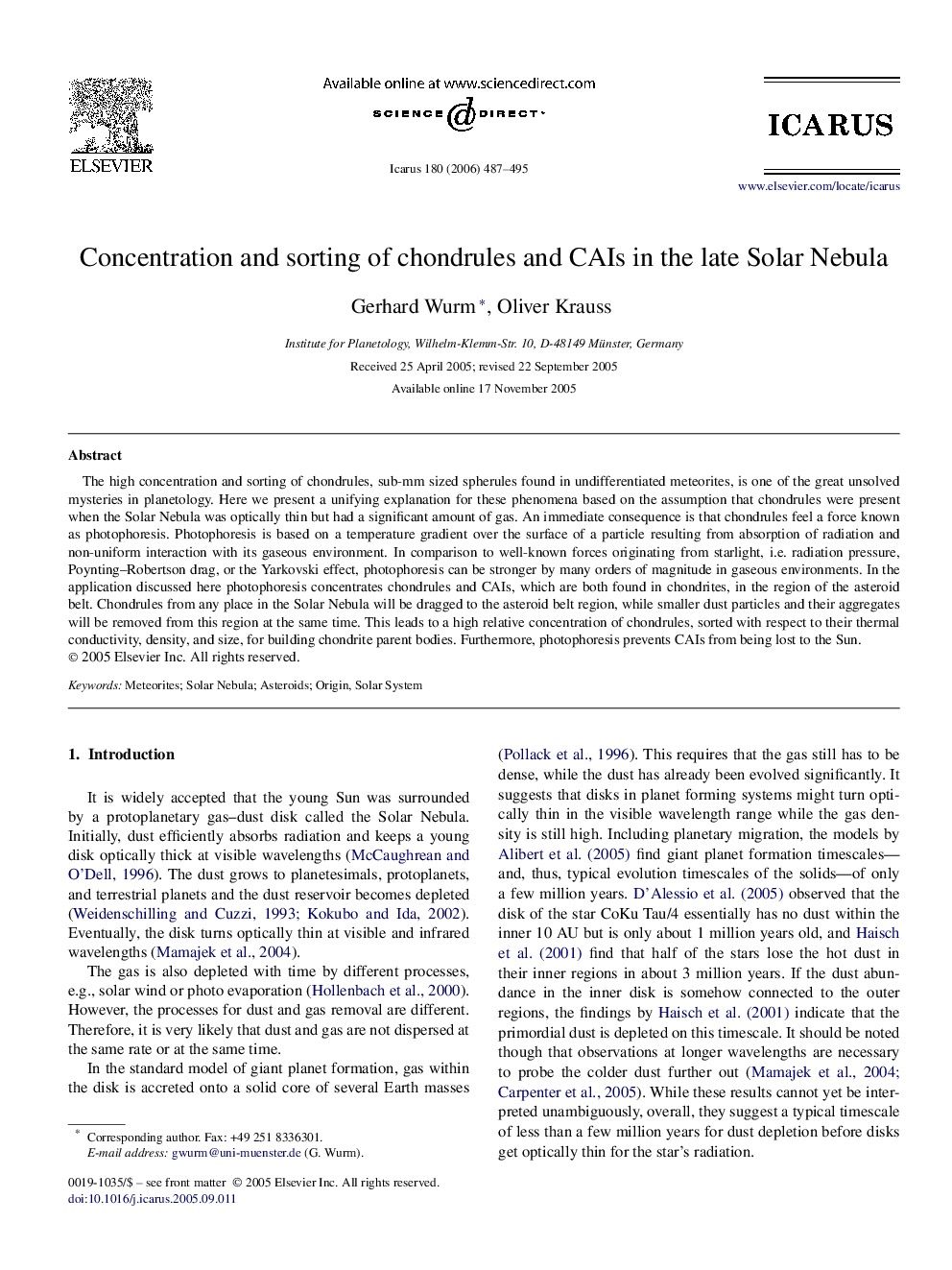| Article ID | Journal | Published Year | Pages | File Type |
|---|---|---|---|---|
| 1775956 | Icarus | 2006 | 9 Pages |
The high concentration and sorting of chondrules, sub-mm sized spherules found in undifferentiated meteorites, is one of the great unsolved mysteries in planetology. Here we present a unifying explanation for these phenomena based on the assumption that chondrules were present when the Solar Nebula was optically thin but had a significant amount of gas. An immediate consequence is that chondrules feel a force known as photophoresis. Photophoresis is based on a temperature gradient over the surface of a particle resulting from absorption of radiation and non-uniform interaction with its gaseous environment. In comparison to well-known forces originating from starlight, i.e. radiation pressure, Poynting–Robertson drag, or the Yarkovski effect, photophoresis can be stronger by many orders of magnitude in gaseous environments. In the application discussed here photophoresis concentrates chondrules and CAIs, which are both found in chondrites, in the region of the asteroid belt. Chondrules from any place in the Solar Nebula will be dragged to the asteroid belt region, while smaller dust particles and their aggregates will be removed from this region at the same time. This leads to a high relative concentration of chondrules, sorted with respect to their thermal conductivity, density, and size, for building chondrite parent bodies. Furthermore, photophoresis prevents CAIs from being lost to the Sun.
